Related Research Articles

Abraham Stoker was an Irish author who wrote the 1897 Gothic horror novel Dracula. During his lifetime, he was better known as the personal assistant of actor Sir Henry Irving and business manager of the West End's Lyceum Theatre, which Irving owned.
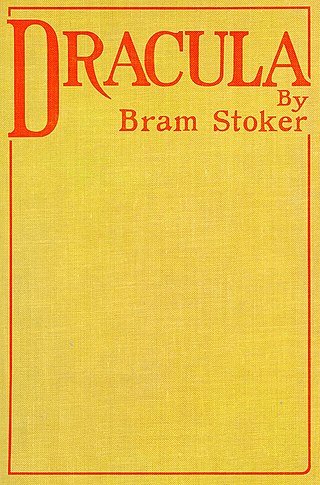
Dracula is a novel by Bram Stoker, published in 1897. An epistolary novel, the narrative is related through letters, diary entries, and newspaper articles. It has no single protagonist and opens with solicitor Jonathan Harker taking a business trip to stay at the castle of a Transylvanian nobleman, Count Dracula. Harker escapes the castle after discovering that Dracula is a vampire, and the Count moves to England and plagues the seaside town of Whitby. A small group, led by Abraham Van Helsing, investigate, hunt and kill Dracula.

Bram Stoker's Dracula is a 1992 American vampire horror film produced and directed by Francis Ford Coppola and written by James V. Hart, based on the 1897 novel Dracula by Bram Stoker. The film stars Gary Oldman, Winona Ryder, Anthony Hopkins, Keanu Reeves, Richard E. Grant, Cary Elwes, Billy Campbell, Sadie Frost, and Tom Waits. Set in 19th century England and Romania, it follows the titular vampire (Oldman), who falls in love with Mina Murray (Ryder), the fiancée of his solicitor Jonathan Harker (Reeves). When Dracula begins terrorizing Mina's friends, Professor Abraham Van Helsing (Hopkins), an expert in vampirism, is summoned to bring an end to the vampire's reign of terror. Its closing credits theme "Love Song for a Vampire", is written and performed by Annie Lennox.
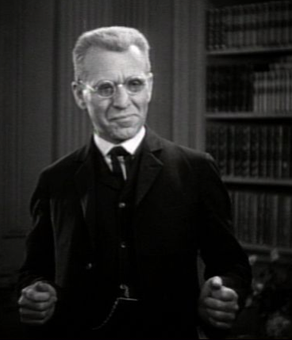
Professor Abraham Van Helsing is a fictional character from the 1897 gothic horror novel Dracula written by Bram Stoker. Van Helsing is a Dutch polymath doctor with a wide range of interests and accomplishments, partly attested by the string of letters that follows his name: "MD, D.Ph., D.Litt., etc.", indicating a wealth of experience, education and expertise. He is a doctor, professor, lawyer, philosopher, scientist, and metaphysic. The character is best known through many adaptations of the story as a vampire slayer, monster hunter and the arch-nemesis of Count Dracula, and the prototypical and the archetypical parapsychologist in subsequent works of paranormal fiction.

Wilhelmina "Mina" Harker is a fictional character and the main female character in Bram Stoker's 1897 Gothic horror novel Dracula.

Quincey P. Morris is a fictional character in Bram Stoker's 1897 gothic novel Dracula.
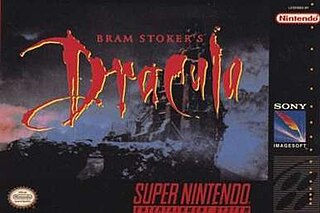
Bram Stoker's Dracula is a 1993 video game released for the Mega Drive/Genesis, Nintendo Entertainment System, Super NES, Game Boy, Master System, Sega CD, Game Gear, MS-DOS, and Amiga. It is based on the 1992 film Bram Stoker's Dracula which in turn is based on the 1897 novel Dracula by Bram Stoker. Most versions are platform games. The Sega CD and Amiga releases are beat 'em ups, and the MS-DOS version is a first-person shooter. The Amiga version was released in 1994 for North America and Europe. A CD-ROM version for MS-DOS compatible operating systems was released in 1995.

Jonathan Harker is a fictional character and one of the main protagonists of Bram Stoker's 1897 Gothic horror novel Dracula. An English solicitor, his journey to Transylvania and encounter with the vampire Count Dracula and his Brides at Castle Dracula constitutes the dramatic opening scenes in the novel and most of the film adaptations.

Dracula's Guest and Other Weird Stories is a collection of short stories by Bram Stoker, first published in 1914, two years after Stoker's death, at the behest of his widow Florence Balcombe.

Florence Balcombe was the wife and literary executor of Bram Stoker. She is remembered for her legal dispute with the makers of Nosferatu, an unauthorized film based on her husband's novel Dracula.
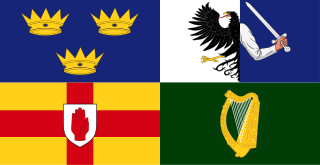
Abhartach, also Avartagh, is an early Irish legend, which was first collected in Patrick Weston Joyce's The Origin and History of Irish Names of Places (1870). Abhartach should not be confused with the similarly named Abartach, a figure associated with Fionn mac Cumhaill.
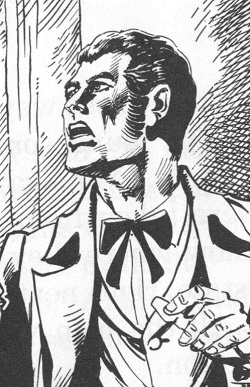
Arthur "Art" Holmwood is a fictional character in Bram Stoker's 1897 novel Dracula.
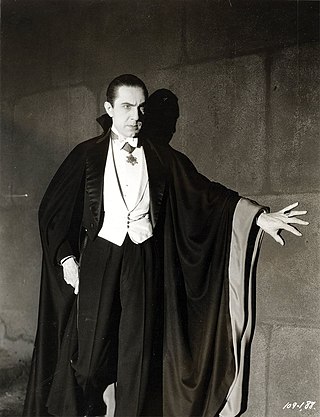
Count Dracula is the title character of Bram Stoker's 1897 gothic horror novel Dracula. He is considered the prototypical and archetypal vampire in subsequent works of fiction. Aspects of the character are believed by some to have been inspired by the 15th-century Wallachian prince Vlad the Impaler, who was also known as Vlad Dracula, and by Sir Henry Irving, an actor for whom Stoker was a personal assistant.

Dracula, also known as Bram Stoker's Dracula and Dan Curtis' Dracula, is a 1974 British made-for-television gothic horror film and adaptation of Bram Stoker's 1897 novel Dracula. It was written by Richard Matheson and directed by Dark Shadows creator Dan Curtis, with Jack Palance in the title role. It was the second collaboration for Curtis and Palance after the 1968 TV film The Strange Case of Dr. Jekyll and Mr. Hyde.

Hamilton Deane was an Irish actor, playwright and director. He played a key role in popularising Bram Stoker's 1897 novel Dracula as a 1924 stage play and a 1931 film.
Dacre Calder Stoker is a Canadian-US author, sportsman and filmmaker.
Primrose Path or The Primrose Path may refer to:
Leslie Shepard was a British author, archivist, and curator who wrote books on a range of subjects including street literature, early film, and the paranormal.
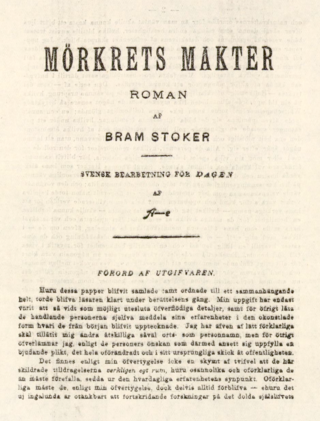
Powers of Darkness is an anonymous 1899 Swedish version of Bram Stoker’s 1897 novel Dracula, serialised in the newspaper Dagen and credited only to Bram Stoker and the still-unidentified "A—e."
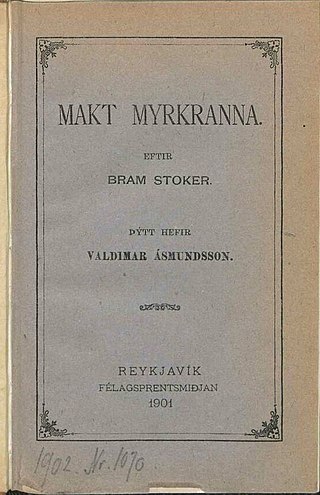
Powers of Darkness is a 1901 Icelandic book by Valdimar Ásmundsson that claims to be a translation of Dracula, by Bram Stoker. It was based upon an earlier adaptation of Dracula, the Swedish adaptation of the same name by "A—e", specifically the shortened version. Both versions differ significantly from Dracula as published in English and are believed to have used an early draft of Stoker's novel as partial basis for the translation.
References
- ↑ "Bram Stoker – Novels". www.bramstoker.org.